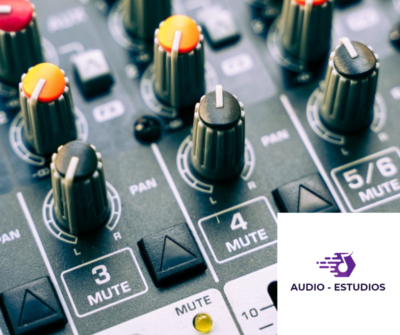Audio formats are specifically designed to encode and compress audio data in a way that makes it possible to play back the sound on a variety of different devices. This allows people to listen to music, but they are of different types. Here on this page, you get to learn more on the topic of what is the highest quality audio format.
The highest quality audio format is generally considered to be an uncompressed audio format, such as WAV or AIFF. These formats store the raw audio data without any loss of quality, resulting in the highest possible fidelity.
However, uncompressed audio formats have large file sizes and may not be practical for all situations. For example, if you need to transmit the audio over the internet or store it on a portable device, you may need to use a compressed audio format that offers a trade-off between file size and sound quality.
Some popular compressed audio formats include MP3, AAC, and FLAC. These formats use advanced algorithms to compress the audio data, resulting in smaller file sizes while still maintaining relatively high sound quality.
What is an Audio File Format?
An audio file format is a type of file that is specifically designed to store and transmit audio data. Audio file formats are typically encoded using a specific audio codec, which is a software algorithm that is designed to compress and decompress audio data.
The audio codec determines how the audio data is encoded and compressed, as well as how it is played back. Different audio file formats support different codecs, which can affect the quality and compatibility of the audio file.
Some common audio file formats include MP3, WAV, and AAC. These formats differ in their use of audio codecs and the resulting sound quality and file size. Understanding the different audio file formats and their characteristics can help you choose the best format for your needs.
What is the highest quality audio format?
The highest quality audio format is generally considered to be an uncompressed audio format, such as WAV or AIFF. These formats store the raw audio data without any loss of quality, resulting in the highest possible fidelity.
Uncompressed audio formats are often used in professional audio production, where the highest possible sound quality is desired.
However, these formats have large file sizes and are not always practical for everyday use. For example, if you want to listen to music on your phone or share audio files over the internet, you may need to use a compressed audio format that offers a trade-off between file size and sound quality.
Also, some of the popular compressed audio formats include AAC, MP3, and FLAC. These formats use advanced algorithms to compress the audio data, resulting in smaller file sizes while still maintaining relatively high sound quality.
Is FLAC or WAV better?
It depends on your specific needs and preferences. Both FLAC and WAV are high-quality audio formats, but they have some key differences that may make one a better option for you than the other.
FLAC is a lossless audio format, which means that it encodes audio data in a way that preserves the full quality of the original sound.
This results in larger file sizes but also means that the audio will sound exactly the same as the original recording when played back. FLAC is a popular choice for audiophiles and anyone who wants the best possible sound quality.
In addition, WAV is also a lossless audio format, but it uses a different type of compression than FLAC. This means that WAV files may be slightly larger or smaller than FLAC files, depending on the specific audio data. However, WAV files are compatible with a wider range of devices and software, which makes them a good choice for compatibility.
Generally, if sound quality is your top priority and file size is not a concern, FLAC may be the better option. However, if you need to save space or ensure that your audio files are compatible with a wide range of devices, WAV may be the better choice. Ultimately, the best format for you will depend on your specific needs and preferences.
Is FLAC the highest quality?
FLAC is a high-quality audio format, but it is not necessarily the highest quality format available. FLAC is a lossless audio format, which means that it encodes audio data in a way that preserves the full quality of the original sound.
This results in larger file sizes but also means that the audio will sound exactly the same as the original recording when played back. FLAC is a popular choice for audiophiles and anyone who wants the best possible sound quality, but it is not the only option.
Generally, the highest quality audio format is generally considered to be an uncompressed audio format, such as WAV or AIFF. These formats store the raw audio data without any loss of quality, resulting in the highest possible fidelity.
However, these formats have large file sizes and are not always practical for everyday use. For example, if you want to listen to music on your phone or share audio files over the internet, you may need to use a compressed audio format that offers a trade-off between file size and sound quality.
What is the highest quality MP3 format?
The highest quality MP3 format is generally considered to be the LAME encoder, which is an open-source software project that provides high-quality audio encoding.
When using the LAME encoder to create MP3 files, you can choose a bitrate (the amount of data used to encode the audio) that determines the sound quality and file size of the resulting MP3. A higher bitrate will result in better sound quality, but it will also result in a larger file size.
Additionally, the highest possible bitrate for MP3 files is 320 kbps, which is the highest quality setting available. However, this setting may not be practical for all situations, as it will result in very large file sizes. In general, a bitrate of 256 kbps or higher is considered to be high quality for MP3 files.
Does MP3 to WAV lose quality?
Yes, converting an MP3 to a WAV file can result in a loss of sound quality. This is because MP3 is a lossy audio format, which means that it uses advanced algorithms to compress audio data and remove some of the redundant information.
This results in smaller file sizes, but it also means that some of the original audio data is lost and cannot be recovered. When you convert an MP3 to a WAV file, the additional audio data is not added back, so the resulting WAV file will be lower quality than the original MP3.
Also, WAV is a lossless audio format, which means that it encodes audio data in a way that preserves the full quality of the original sound. This results in larger file sizes but also means that the audio will sound exactly the same as the original recording when played back.
However, when you convert an MP3 to a WAV file, the WAV file will not have the same quality as the original recording because it will only contain the audio data that was present in the MP3 file.
Furthermore, converting an MP3 to a WAV file will result in a loss of sound quality because the WAV file will not have all of the audio data that was present in the original recording.
If you want to maintain the highest possible sound quality, it is better to keep the original audio files in their original format rather than convert them to another format.
Factors to consider when choosing an audio format
There are several factors to consider when choosing an audio format. Some of the most important factors include the following:
1. Sound quality:
The sound quality of the audio format is an important consideration. Lossless audio formats, such as FLAC or ALAC, offer the highest possible sound quality, as they preserve the full quality of the original sound. Lossy audio formats, such as MP3 or AAC, offer lower sound quality but smaller file sizes.
2. File size:
The file size of the audio format is another important consideration. Uncompressed audio formats, such as WAV or AIFF, have large file sizes but offer the best sound quality. Compressed audio formats, such as MP3 or AAC, have smaller file sizes but may sacrifice some sound quality.
3. Compatibility:
The compatibility of the audio format is also important. Some audio formats, such as MP3 and AAC, are compatible with a wide range of devices and software, making them a good choice for sharing or playback on multiple devices.
Other formats, such as FLAC or ALAC, may not be as widely supported, which can limit their compatibility.
4. Features:
Some audio formats offer additional features, such as the ability to add metadata or support for different audio codecs. These features can provide more flexibility and control over the audio content, but they may not be available in all formats.
So, when choosing an audio format, it is important to consider factors such as sound quality, file size, compatibility, and features. The best format for you will depend on your specific needs and preferences.
Parameters that define high-quality audio
There are several parameters that can be used to define high-quality audio. Some of the most important parameters include the following:
1. Bit depth:
The bit depth of an audio file determines the number of bits that are used to represent each sample of the audio data. A higher bit depth results in a higher dynamic range and better overall sound quality, but it also results in larger file sizes.
2. Sample rate:
The sample rate of an audio file determines the number of samples that are taken per second. A higher sample rate results in a more accurate representation of the original sound and better overall sound quality, but it also results in larger file sizes.
3. Bitrate:
The bitrate of an audio file determines the amount of data that is used to encode the audio. A higher bitrate results in better sound quality, but it also results in larger file sizes.
4. Dynamic range:
The dynamic range of an audio file is the difference between the loudest and quietest sounds that the file can represent. A higher dynamic range results in better sound quality, as it allows for more detail and clarity in the audio.
High-quality audio is typically defined by parameters such as bit depth, sample rate, bitrate, and dynamic range. These parameters determine the overall sound quality of the audio file and can help to distinguish high-quality audio from lower-quality audio.
Conclusion
The highest quality audio format is a subjective matter, as different people may have different preferences when it comes to sound quality. However, many people consider lossless audio formats such as FLAC, ALAC, and WAV to be the highest quality, as these formats retain all of the original data from the source recording and provide the best possible sound quality.
These formats do require a lot of storage space, however, so they may not be the most practical choice for everyone. Ultimately, the best audio format for you will depend on your personal preferences and your specific needs. So, we hope we have answered the question of what is the highest quality audio format in a way that pleases you.



